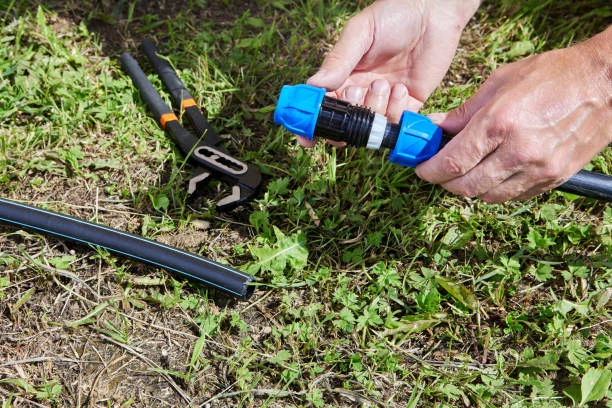When it comes to modern plumbing and piping solutions, HDPE PP compression fittings stand out as a reliable and efficient choice. These fittings are crucial in connecting high-density polyethylene (HDPE) pipes, offering a secure and leak-proof joint without the need for additional tools or heat.
What Are HDPE PP Compression Fitting?
HDPE PP compression fitting are specialized connectors designed for use with HDPE pipes. Made from durable polypropylene (PP), these fitting utilize a compression mechanism to create a tight seal. This technology allows for flexibility and ease of installation in various applications, including water supply, irrigation, and industrial systems.
Why Choose HDPE PP Compression Fitting?
1. Durability
One of the main advantages of HDPE PP compression fitting is their durability. Made from high-quality materials, these fittings can withstand harsh environmental conditions, including UV exposure and extreme temperatures. They resist corrosion and chemical degradation, making them ideal for long-term use.
2. Ease of Installation
Installation is straightforward with HDPE PP compression fitting. There’s no need for welding or specialized tools. You simply slide the fitting onto the pipe and tighten the compression ring. This feature significantly reduces installation time and labor costs.
3. Leak-Proof Connections
Compression fittings create a tight, leak-proof seal. This quality is essential in preventing water loss and ensuring system efficiency. The design also allows for easy disassembly and reassembly if needed, without compromising the integrity of the fitting.
Applications of HDPE PP Compression Fitting
1. Water Supply Systems
HDPE PP compression fittings are widely used in municipal water supply systems. Their ability to handle high pressures and resist corrosion makes them a popular choice among engineers and contractors.
2. Irrigation Systems
In agriculture, these fittings are often used in irrigation systems. They ensure a reliable flow of water to crops while minimizing the risk of leaks.
3. Gas Distribution
The fittings are also suitable for gas distribution systems. Their durability and leak-proof nature ensure safety and efficiency in transporting gases.
Types of HDPE PP Compression Fitting
1. Elbow Fittings
Elbow fittings allow for directional changes in piping systems. They come in various angles, typically 45° and 90°, making them versatile for different layouts.
2. Tee Fittings
Tee fittings enable branching off a main line, connecting three pipes at a junction. They’re essential for creating multiple pathways in a piping system.
3. End Caps
End caps are used to close off the end of a pipe. They help to maintain pressure and prevent debris from entering the system.
Advantages of Using HDPE PP Compression Fittings
1. Cost-Effectiveness
While initial costs may vary, the long-term savings due to their durability and reduced maintenance needs make HDPE PP compression fitting a cost-effective solution.
2. Flexibility
These fittings offer flexibility in installation. They can be used in various applications and adapted to different pipe sizes and materials, which makes them suitable for many projects.
3. Environmental Benefits
HDPE is a recyclable material. Using HDPE PP compression fittings contributes to sustainable practices by reducing waste and environmental impact.
Maintenance Tips for HDPE PP Compression Fitting
1. Regular Inspections
Conduct regular inspections of the fittings to check for signs of wear or damage. Early detection can prevent larger issues down the line.
2. Keep Fittings Clean
Ensure that the fittings and pipes remain clean to maintain a proper seal. Debris can compromise the integrity of the connection.
3. Monitor Pressure Levels
Regularly check the pressure levels in your system. Unusual fluctuations can indicate a problem that needs addressing.

Conclusion
In summary, HDPE PP compression fitting are an excellent choice for anyone looking for reliable and durable piping solutions. Their ease of installation, leak-proof connections, and versatility make them suitable for various applications, from water supply systems to agricultural irrigation. By choosing these fittings, you invest in a long-lasting, efficient solution for your piping needs.
FAQs
1. What are HDPE PP compression fittings made of?
HDPE PP compression fittings primarily use high-density polyethylene and polypropylene, ensuring durability and resistance to corrosion.
2. How do you install HDPE PP compression fitting?
Installation is simple: slide the fitting onto the pipe, tighten the compression ring, and ensure a secure seal.
3. Are HDPE PP compression fitting suitable for high-pressure applications?
Yes, these fittings are designed to handle high-pressure systems, making them ideal for various applications.
4. Can HDPE PP compression fittings be reused?
Yes, you can disassemble and reuse these fittings without losing their effectiveness if you handle them properly.
5. What maintenance do HDPE PP compression fitting require?
We recommend regular inspections, cleaning, and monitoring pressure levels to ensure optimal performance.